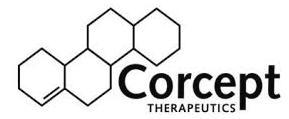News Articles February 2022
Written on 04 February 2022.
Hydrocephalus
A condition marked by an excessive accumulation of fluid resulting in enlarging of the brain cavities and raised pressure within the skull; may also result in enlargement of the skull and wasting of the brain.
The abnormal buildup of cerebrospinal fluid in the ventricles of the brain. Also called: Water on the brain.
Excessive accumulation of cerebrospinal fluid within the cranium which may be a congenital or acquired disorder; hydrocephalus ex-vacuo refers to ventricular dilation that occurs as a result of brain substance loss from cerebral infarction and other conditions. There are two types of hydrocephalus. Congenital hydrocephalus (present at birth), and acquired hydrocephalus (occuring at any age). Causes of congenital hydrocephalus include genetic problems and problems in fetus development. An unusually large head is the main sign of congenital hydrocephalus. Causes of acquired hydrocephalus can include head injuries, strokes, infections, tumors and bleeding in the brain. Symptoms range from headache, vomiting, nausea, blurred vision, balance impairment, bladder control problems as well as confusion and memory impairment. Hydrocephalus can cause permanent brain damage, resulting in problems with physical and mental development; if left untreated, it is usually fatal. With treatment, normalcy can be achieved with few limitations. Surgical treatment usually involves inserting a shunt. Medication and rehabilitation therapy can also help.
Hyperfractionation
An increased number of smaller dosage treatments of radiation therapy.
Radiation therapy that gives smaller doses (fractions) of radiation more often than standard radiation therapy so that the full treatment course can be given with fewer side effects. In hyperfractionation, individual doses are given more often than the standard dose of once a day. Also called hyperfractionated radiation therapy and superfractionated radiation therapy.
Hypogonadism (Adj. Hypogonadal)
The inability of the gonads to function normally.
Can be due to pituitary dysfunction or else dysfunction of the glands (ovaries and testicles).
ICP
Intracranial pressure, harmful when increased.
Intracranial pressure monitoring is done using a device placed inside the head which senses the pressure inside the brain cavity and sends data to a recording device. There are three procedures to monitor intracranial pressure:
1) A intraventricular catheter threaded into one of the two cavities of the brain, called lateral ventricles
2) A subarachnoid screw or bolt placed just through the skull in the space between the arachnoid membrane and cerebral cortex
3) A epidural sensor placed into the epidural space beneath the skull.
IGFBP-3
Produced by the liver, formerly known as somatomedin-C, and is a marker of the amount of GH secreted over time.
IICP
Increased intracranial pressure.
See ICP (intracranial pressure)
IL-6
Interleukin-6.
One of a group of related proteins made by leukocytes (white blood cells) and other cells in the body. IL-6 is made mainly by some T lymphocyte. It causes B lymphocytes to make more antibodies and also causes fever by affecting areas of the brain that control body temperature. IL-6 made in the laboratory is used as a biological response modifier to boost the immune system in cancer therapy. IL-6 is a type of cytokine. Also called interleukin-6.
Researchers have found that patients with plasma cell tumors have important abnormalities in other bone marrow cells and that these abnormalities may also cause excess plasma cell growth. Certain cells in the bone marrow called dendritic cells release a hormone called interleukin-6 (IL-6), which stimulates growth in normal plasma cells. Excess IL-6 production by these cells appears to be an important factor in development of plasma cell tumors.
Immunotherapy
Use of the body’s immune system to fight tumors. See biological response modifier.
Treatment to boost or restore the ability of the immune system to fight cancer, infections, and other diseases. Also used to lessen certain side effects that may be caused by some cancer treatments. Agents used in immunotherapy include monoclonal antibodies, growth factors, and vaccines. These agents may also have a direct antitumor effect. Also called biological response modifier therapy, biological therapy, biotherapy, and BRM therapy.
Implanted Port
A catheter connected to a quarter-sized disk that is surgically placed just below the skin in the chest or abdomen.
The catheter tube is inserted into a large vein or artery directly into the bloodstream. Fluids, drugs, or blood products can be infused or blood drawn through a needle that is stuck into the disk. Examples of manufacturer’s names: Port-o-cath, Infusaport, Lifeport.
Inaccessible
Refers to tumors that cannot be approached by surgical procedure.
Tumors that are deep in the brain or beneath vital structures. Inaccessible tumors cannot be approached by standard surgical techniques.
Available Now!

The Pituitary Patient Resource Guide Sixth Edition is now available! Be one of the first to have the most up-to-date information. The Pituitary Patient Resource Guide a one of a kind publication intended as an invaluable source of information not only for patients but also their families, physicians, and all health care providers. It contains information on symptoms, proper testing, how to get a diagnosis, and the treatment options that are available. It also includes Pituitary Network Association's patient resource listings for expert medical care.

Xeris Pharmaceuticals is valued member of the PNA










